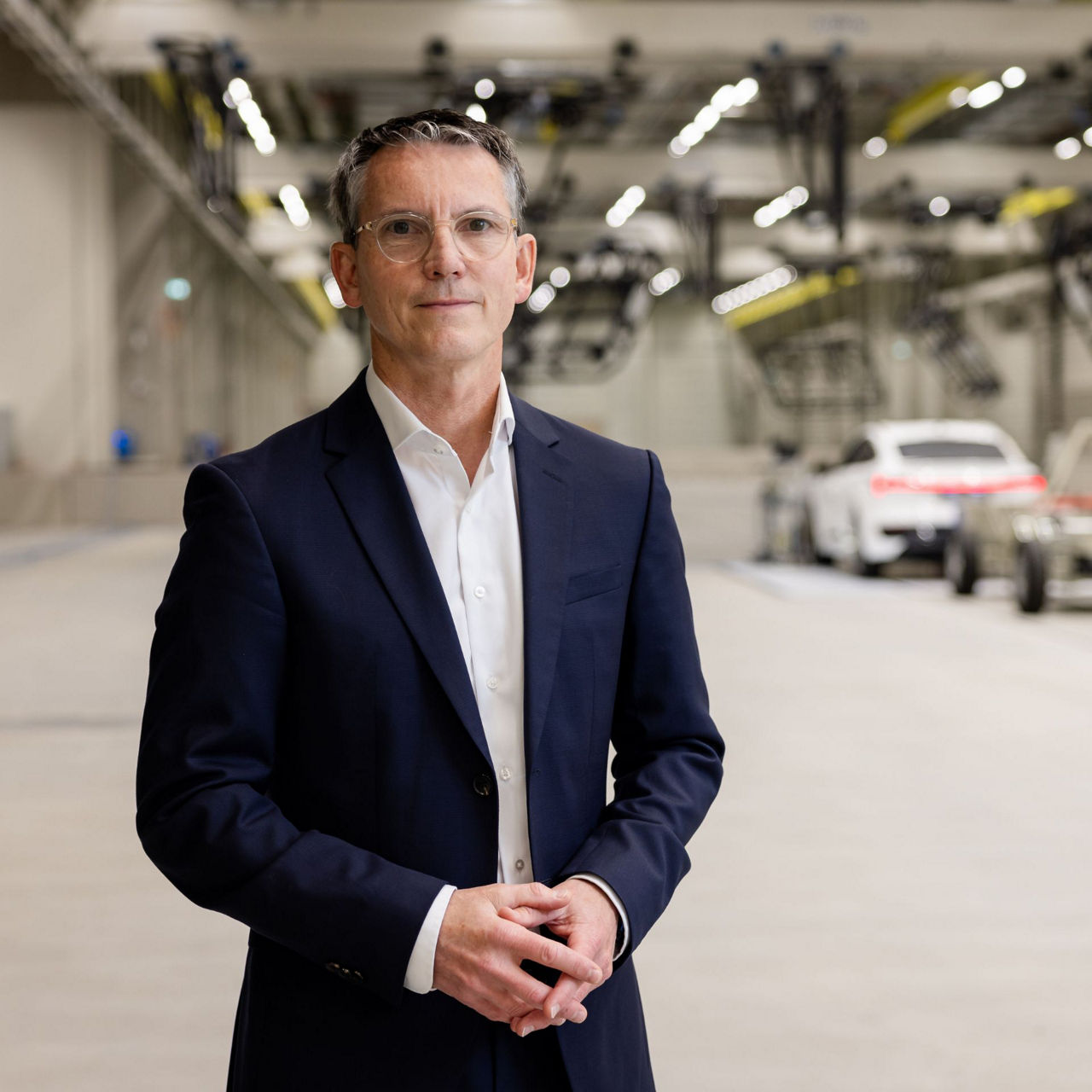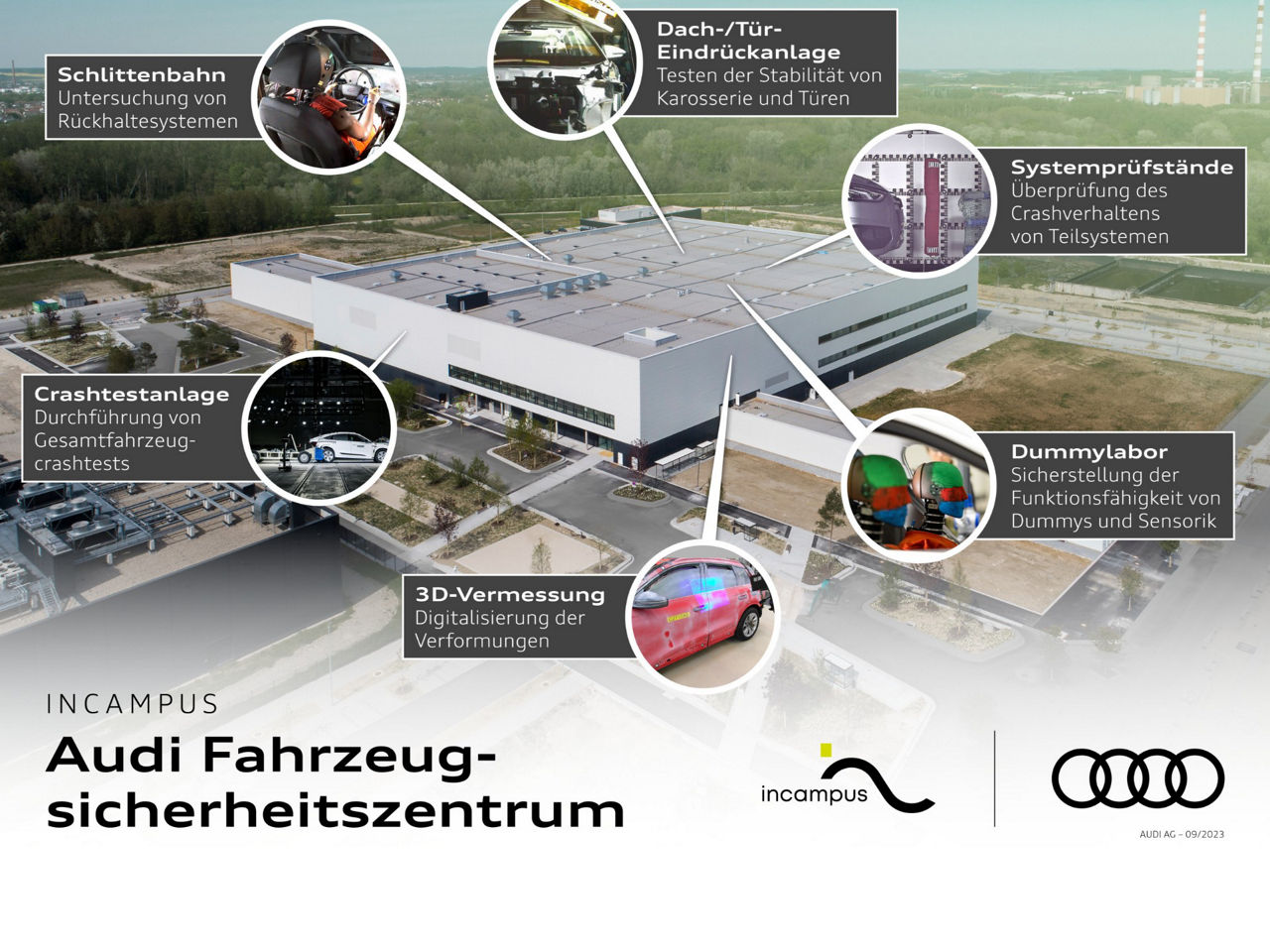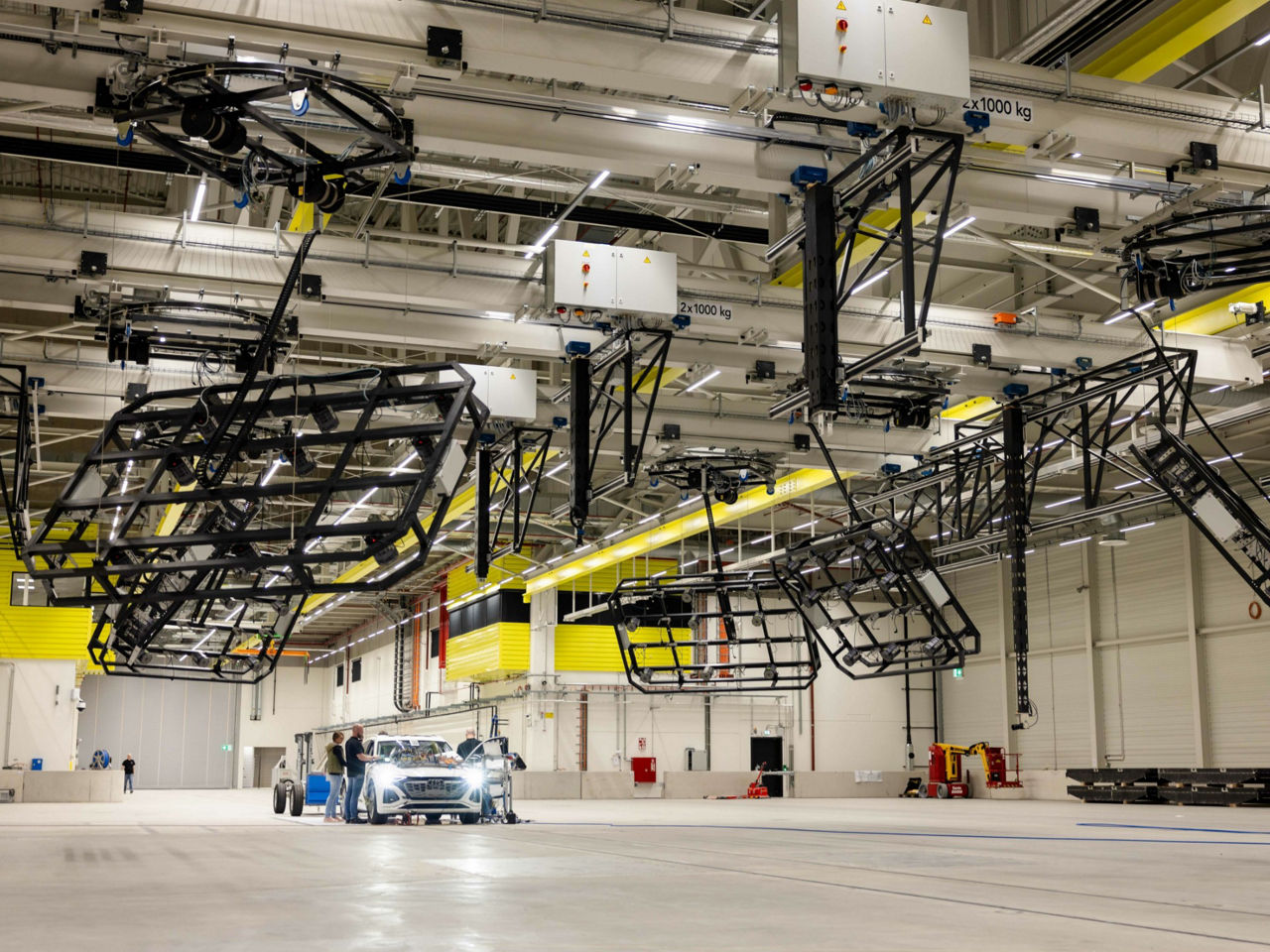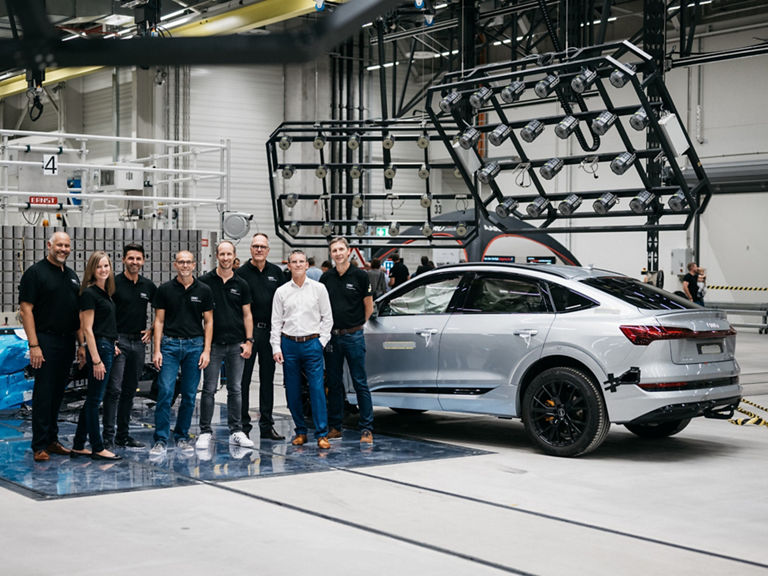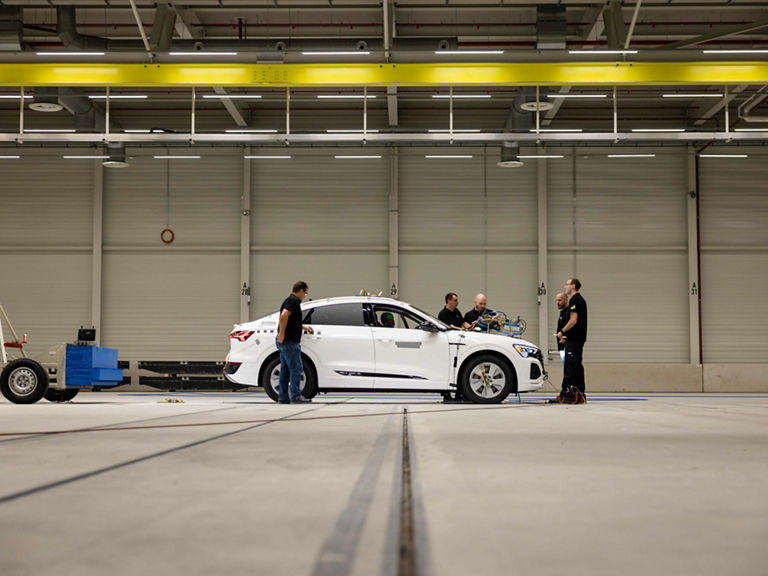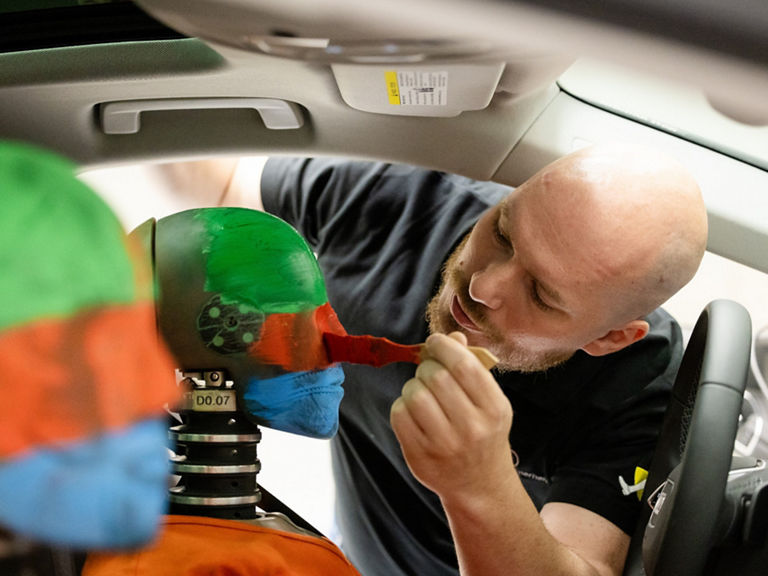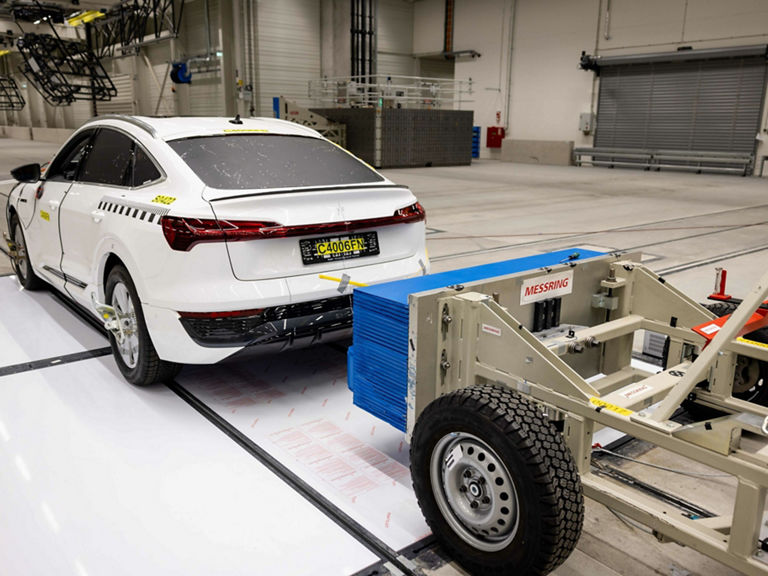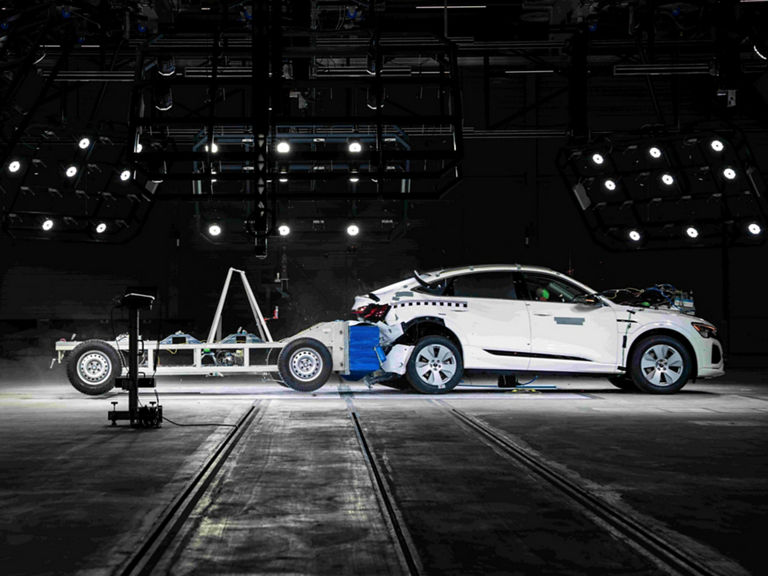„Our mission: to save even more lives around the world"
In its new vehicle safety center, Audi subjects its vehicles to sophisticated crash tests to optimize them and increase safety standards – also taking into account the most demanding safety requirements used in the major markets of North America, China and Europe. A visit with the experts for crash tests and passive vehicle safety*.
missing translation: fa.article-intro.reading-time – 11/22/2023
*Experts consider “active safety” to be all elements in a vehicle that could help prevent an accident. For example: brake system, active emergency brake systems, chassis, tires, automobile light technologies and driver assist system like Audi pre sense. “Passive safety” involves elements that can reduce the risk of injury or eliminate it entirely. It includes seat belts, airbags, stable passenger compartments and energy-dissipating vehicle structures.

